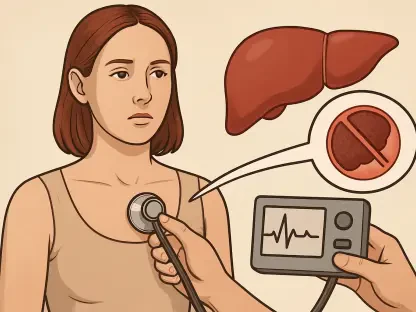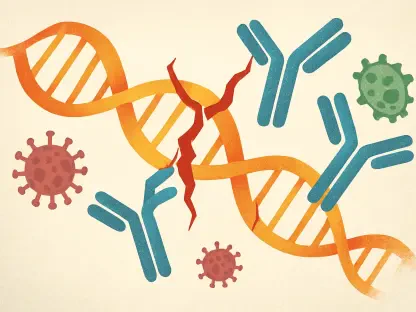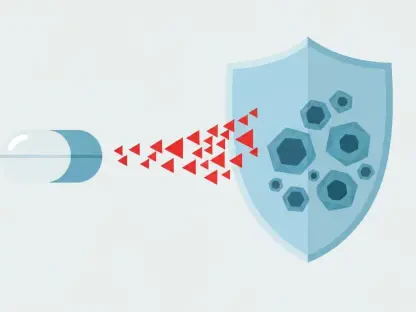Imagine a man in his early 60s receiving a diagnosis of Grade Group 1 (GG1) prostate cancer, often considered the least aggressive form of the disease, only to discover later that his condition was far more serious than initially assessed. This scenario, more common than many realize, underscores a critical challenge in prostate cancer care: the accuracy of risk stratification. With prostate cancer being one of the most prevalent cancers among men, affecting hundreds of thousands annually in the United States alone, the need for precise risk assessment has never been more urgent. Emerging research reveals that traditional classifications like GG1 may not fully capture the severity of the disease in a significant number of patients. This article delves into the evolving trends in risk stratification for GG1 prostate cancer, examines the challenges in current practices, incorporates expert insights, explores future directions, and highlights key takeaways for enhancing patient outcomes.
Evolving Understanding of GG1 Prostate Cancer Risk
Data-Driven Insights on Risk Misclassification
Recent studies utilizing data from the National Cancer Institute’s SEER Program, spanning over a decade of records and including approximately 300,000 men with localized prostate cancer, have shed new light on GG1 classifications. Among these, about 117,000 men were initially diagnosed with GG1, often perceived as low-risk. However, a striking finding indicates that roughly one in six of these patients—over 18,000 men—were reclassified as intermediate- or high-risk when additional clinical factors such as PSA levels and tumor size were considered.
This growing body of evidence points to a significant trend: the medical community is increasingly recognizing that biopsy-based GG1 classifications frequently underestimate the true severity of the disease. Alarmingly, statistics reveal that up to 30% of these reclassified patients remain on active surveillance, a management strategy typically reserved for low-risk cases, which raises concerns about potential undertreatment and delayed intervention.
The implications of these findings are profound, as they challenge long-standing assumptions about the benign nature of GG1 diagnoses. As data continues to accumulate, there is a clear shift toward reevaluating how risk is assessed, pushing for more comprehensive diagnostic approaches to ensure accurate categorization of patient risk levels.
Real-World Implications of GG1 Misclassification
In clinical settings across the United States, the consequences of misclassifying GG1 patients are becoming evident through various patient outcomes. Consider anonymized case studies drawn from extensive datasets, where individuals initially placed on active surveillance due to a GG1 diagnosis later experienced disease progression. In some instances, undetected aggressive cancers led to significant health declines, highlighting the pitfalls of relying solely on biopsy grading.
Such scenarios are not isolated but reflect a broader issue in hospitals and clinics nationwide. When biopsy results are taken as the definitive measure of risk without integrating other clinical indicators, critical warning signs can be missed. This often results in delayed treatments, allowing the cancer to advance to stages that are more difficult to manage effectively.
The trend of underestimating risk in GG1 patients underscores a pressing need for systemic change in diagnostic protocols. As real-world cases continue to emerge, they serve as a stark reminder that current practices may not adequately protect a significant subset of patients from the consequences of hidden, aggressive disease.
Expert Perspectives on Refining Risk Stratification
Prominent voices in the field are calling for a fundamental shift in how GG1 prostate cancer is approached. Dr. Jonathan Shoag, a key researcher in this area, has emphasized that the term “low grade” should not be conflated with “low risk,” as many patients with GG1 classifications harbor more dangerous cancers when assessed holistically. This perspective challenges the traditional view and urges a more nuanced understanding of the disease.
Similarly, Dr. Neal Arvind Patel advocates for deeper exploration into the biology of GG1 tumors, particularly those exhibiting adverse clinical features. There is a consensus among experts that a personalized approach, combining biopsy results with broader clinical data, is essential for improving risk assessment and guiding treatment decisions. Such integration could prevent both undertreatment and unnecessary interventions.
A notable debate also surrounds the nomenclature of GG1, with some suggesting the removal of the “cancer” label to alleviate patient anxiety. However, experts caution against this, arguing that downplaying the diagnosis could minimize the seriousness for a minority at higher risk, while still acknowledging the psychological burden the term carries. This ongoing discussion reflects the complexity of balancing clinical accuracy with patient well-being.
Future Directions in Prostate Cancer Risk Assessment
Looking ahead, advancements in diagnostic technologies hold promise for more accurate GG1 risk stratification. Innovations such as enhanced imaging techniques and biomarker testing could complement traditional biopsies, offering a clearer picture of disease severity. These tools aim to identify aggressive cancers that might otherwise go undetected, paving the way for more precise patient management.
The move toward personalized medicine in oncology also brings broader implications. Tailored treatment plans based on individual risk profiles could significantly improve outcomes, but challenges such as increased costs and disparities in access to advanced diagnostics must be addressed. Ensuring equitable implementation of these advancements remains a critical concern for the medical community.
As understanding of GG1 biology evolves, clinical guidelines are likely to be updated to strike a balance between active surveillance for truly low-risk cases and timely interventions for those with hidden aggressive disease. This shift aims to optimize patient care while mitigating the risks of overtreatment, reflecting a more sophisticated approach to prostate cancer management in the years to come.
Key Takeaways and Call to Action
Reflecting on the discussions above, it is evident that the limitations of biopsy-based GG1 classification have significant repercussions, with a notable proportion of patients misclassified as low-risk when they face intermediate- or high-risk disease. The data underscores that relying solely on biopsy grading often fails to capture the full spectrum of risk, leading to potential undertreatment.
Experts in the field have consistently highlighted the urgency of adopting comprehensive risk assessment strategies, integrating diverse clinical indicators to better inform treatment decisions. Their insights point to a critical gap in current practices that needs immediate attention to prevent adverse patient outcomes.
Moving forward, it is clear that clinicians, researchers, and policymakers must prioritize the development of refined diagnostic tools and updated guidelines. By fostering collaboration across these groups, the medical community can ensure that men receive accurate diagnoses and appropriate care, ultimately reducing the burden of prostate cancer through innovative and equitable solutions.









